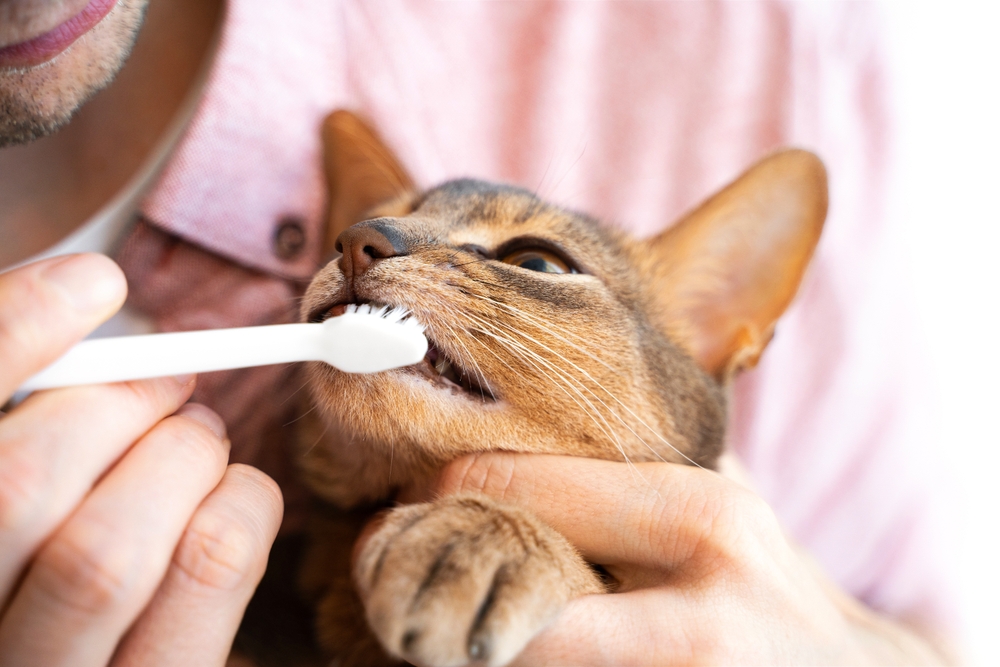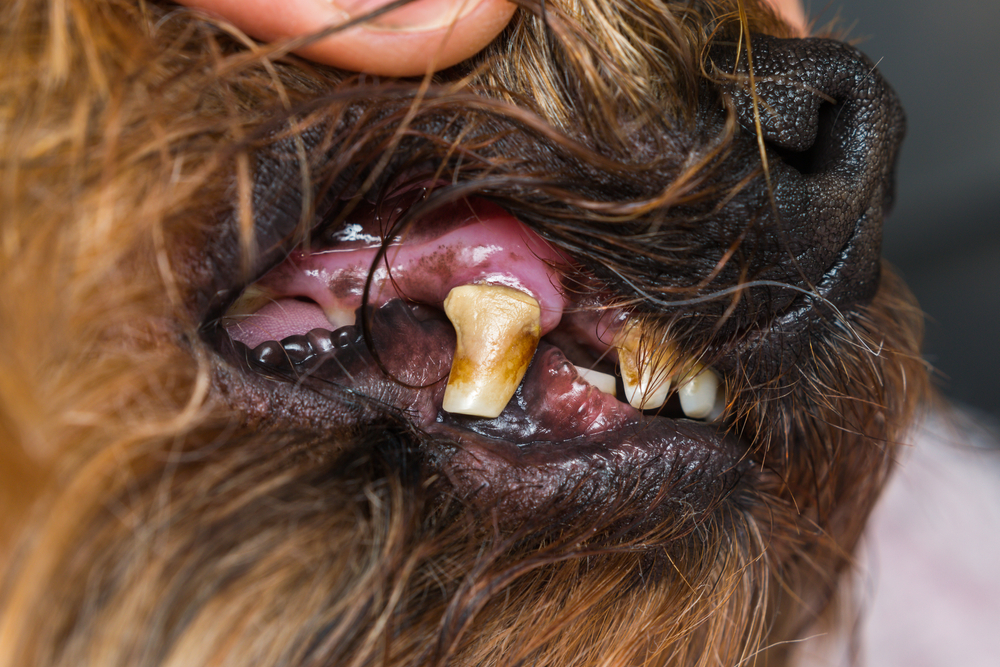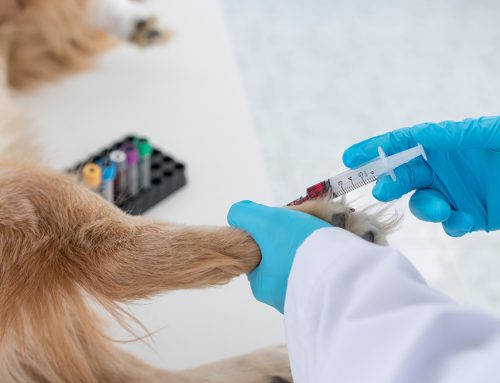Pet dental care wasn’t much of a “thing” back in the day, when many pet owners thought that pets had naturally smelly breath: “Oh, that’s doggie breath.” Thankfully, we’ve come a long way in our understanding of the close link between dental health and overall health. However, more education is needed for pet owners to promote their pet’s good health.
Periodontal disease is one of the most common primary diseases in dogs and cats and can result in systemic problems with major body organs, such as the heart, kidneys, and liver, if left untreated. In recognition of National Pet Dental Health Month, our Boca Midtowne Animal Hospital team explains how to recognize and treat pet periodontal disease.
Pet periodontal disease: Explanation
You may understand periodontal disease as it relates to your dental health, but not that the disease is a growing problem with pets. Periodontal disease is caused initially when bacteria in the mouth form a sticky film called plaque on the surface of the teeth. The plaque mineralizes and builds up as tartar (i.e., calculus) that compromises the tooth structure and results in gingivitis and possible tooth and bone loss.
Pet periodontal disease: Signs
Periodontal disease often goes unnoticed until the problem is advanced, but some early signs indicate dental decay, with halitosis (i.e., bad breath) the most obvious. Other signs include:
- Drooling
- Difficulty eating
- Red, inflamed gums
- Tooth discoloration
- Pawing at the mouth
- Loose, missing, or broken teeth
- Bleeding gums
Any of these signs should be promptly discussed with your veterinarian.
Pet periodontal disease: Stages
When your veterinarian diagnoses periodontal disease, which requires X-rays and a dental examination while your pet is anesthetised, they will likely refer to the four disease stages and develop a treatment plan from the findings.
- Stage 1: Gingivitis — Plaque is present, but the gum line structure is intact. Gingivitis (i.e., mild to moderate inflammation and redness of the gums) is present.
- Stage 2: Early periodontitis — Inflammation and redness are more noticeable, and some pets will have mouth sensitivity. The affected teeth will show more plaque, which can be seen as a brown or grey stain or film on the surface of the teeth, starting at the gums.
- Stage 3: Established periodontitis — Periodontitis is now fully established. The gums appear swollen, sometimes with bleeding, and have deep pockets. Bacterial toxins will circulate and invade the bloodstream. At this stage, bone loss can be seen on dental X-rays, and the pet most likely is uncomfortable and in pain.
- Stage 4: Advanced periodontitis — The disease has advanced and is now considered extreme, because the pet has lost more than 50% of the supportive structures of the teeth. Severe inflammation, pain, bleeding from the gums, bone loss, tooth loss, and deep periodontal pockets are also present.
Clearly, early detection and intervention are critical to avoid the advanced stages of periodontitis, when pets are in severe pain and their entire systemic health is at risk.
Pet periodontal disease: Treatment
The good news is that pet dental health is possible. We recommend annual or twice-a-year wellness exams, which include an assessment of your pet’s oral health. Should we see gingivitis signs or other oral structural changes, we will likely recommend X-rays and a professional dental cleaning.
Professional pet dental cleanings require anesthesia, which concerns some pet owners, but is necessary to examine and clean the teeth safely, thoroughly, and effectively. Periodontitis can be mitigated most successfully through dental cleaning, scaling, and polishing during the first two stages. If the disease does reach advanced stages, the damaged teeth will require removal.
Again, starting your pet’s dental care routine when they are young is critical.
Pet periodontal disease: Dental health begins at home

Another positive point—you can be proactive in your pet’s oral health. Here are a few tips to keep your four-legged friend’s teeth looking, feeling—and smelling—good.
- Brush those teeth — Find a good quality pet toothbrush and pet-safe toothpaste to use on your pet. Never use your own, because human toothpaste is toxic for pets. Several online tutorials can teach you the correct way to brush, or you can ask our team for a demonstration at your pet’s next checkup.
- Kibble can make a difference — Many good options in specialized dental health food and treats are available. Consult with our team to help choose the best foods for your pet.
- Drink up with water additives — These products are designed to reduce plaque and/or tartar through the use of pet-safe chemicals, such as sodium citrate and citric acid, and can simply be added to your pet’s water for extra dental protection.
A word to the wise—look for the seal of approval of the Veterinary Oral Health Council (VOHC) on the products you buy. The VOHC’s board-certified veterinary dentists designate which pet dental products are proven effective.
Pet periodontal disease: The “tooth”
Take an active role in your pet’s dental health. Start your pet on a regular toothbrushing routine at home when they are a puppy or kitten, and ensure they receive their wellness exam, including an oral exam, at least yearly. Our Boca Midtowne Animal Hospital team welcomes your questions and wants to partner with you to prevent periodontal disease in your pet. Call us to schedule their examination.








Leave A Comment